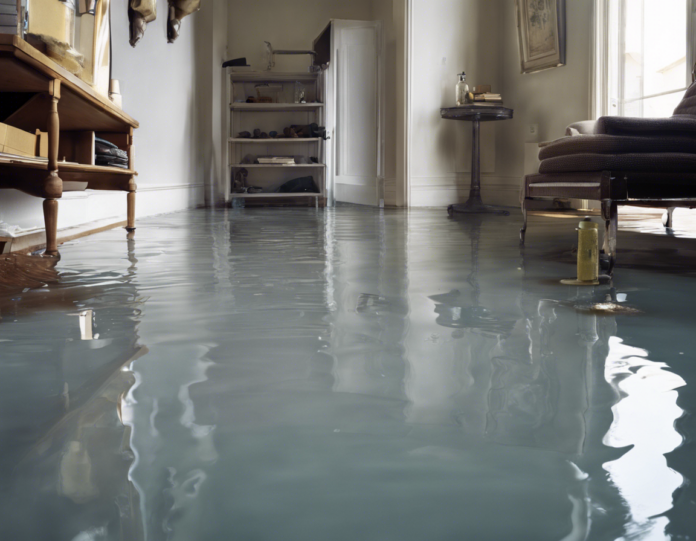Are you finding mysterious pools of water on your floor without any visible signs of a leak? It can be a puzzling and frustrating situation to deal with. However, water appearing on the floor without a visible source is a common issue that many homeowners face. In this article, we will explore the possible reasons behind this phenomenon and provide you with some tips on how to troubleshoot and resolve the issue.
Understanding the Problem
When you notice water on the floor but can’t find a leak, there are several potential culprits to consider:
1. Condensation
Condensation can form on floors, especially in areas with high humidity levels. This can be common in bathrooms, basements, or areas with poor ventilation. If the air is humid and comes into contact with a cooler surface, such as a cold basement floor, it can cause moisture to accumulate and create the appearance of a leak.
2. Plumbing Issues
Sometimes, the source of the water may not be directly above the area where you see it pooling. Leaky pipes or fittings in the walls or ceiling can allow water to travel along pipes and surfaces before dripping onto the floor in a different location.
3. Appliance Leaks
Appliances such as refrigerators, dishwashers, or washing machines can develop leaks that may not be immediately noticeable. Check these appliances for any signs of water damage or pooling around them.
4. Roof Leaks
In some cases, a leak in the roof can allow water to travel down through the walls or ceiling, eventually pooling on the floor. Look for any stains or damp areas on the ceiling or walls that could indicate a roof leak.
5. Window or Door Leaks
Improperly sealed windows or doors can also allow water to enter your home during rain or snow. Over time, this water can accumulate and eventually find its way to your floor.
Troubleshooting Steps
If you’re dealing with water on the floor without a visible leak, here are some steps you can take to troubleshoot the issue:
1. Check for Condensation
- Monitor humidity levels in your home with a hygrometer.
- Improve ventilation in areas prone to condensation by using exhaust fans or opening windows.
2. Inspect Plumbing
- Check for any visible signs of leaks, such as water stains, mold, or mildew.
- Run water in sinks, showers, and tubs to see if you can spot any leaks.
3. Examine Appliances
- Inspect appliances for any signs of water pooling around them.
- Check hoses and connections for leaks or damage.
4. Look for Roof Leaks
- Inspect the attic for any signs of water damage.
- Check the roof for missing or damaged shingles.
5. Address Window and Door Seals
- Seal any gaps around windows and doors with weatherstripping or caulk.
- Check for water intrusion during rainy weather.
Frequently Asked Questions (FAQs)
Q: Should I be concerned if I find water on the floor without a visible leak?
A: While it may be a minor issue such as condensation, it’s essential to investigate further to rule out any potential plumbing or structural problems.
Q: How can I differentiate between condensation and a water leak?
A: Condensation is more likely to occur in areas with poor ventilation and high humidity levels, while a leak will often leave visible signs such as water stains or dripping water.
Q: What should I do if I suspect a leak but can’t locate the source?
A: In this case, it’s advisable to contact a professional plumber or leak detection specialist who can use specialized equipment to pinpoint the source of the leak.
Q: Is water on the floor a sign of a major problem?
A: It could be a minor issue, but it’s always best to investigate promptly to prevent any potential damage or mold growth.
Q: How can I prevent water accumulation on the floor in the future?
A: Regularly inspecting your home for leaks, maintaining appliances, and ensuring proper ventilation can help prevent water-related issues.
In conclusion, finding water on the floor without a visible leak can be a perplexing situation, but by understanding the possible causes and taking the appropriate troubleshooting steps, you can identify and address the problem effectively. If you are unable to determine the source of the water or if the issue persists, don’t hesitate to seek assistance from a professional to prevent any further damage to your home.
